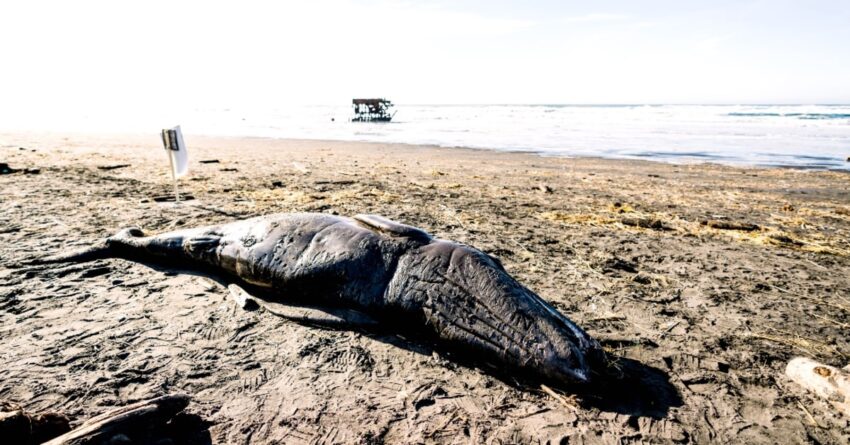Scientists Uncover Why Hundreds of Whales Have Washed Up Dead in Pacific

Nearly 700 gray whales have washed up dead on the Pacific coast between January 2019 and September 2023, and scientists finally believe they have answers. And in what will probably not come as a huge surprise, environmental factors related to climate change seem to be at the root of it all.
The recent uptick in deaths is the third “mortality event” that has struck gray whales living off the coast of North America since the 1980s—once between 1987 and 1989 and the second time between 1999 and 2000—each time reducing the population by 15 to 25 percent. However, what differentiates the most recent die-off is that it’s still ongoing, with a total of 688 whales that have perished.
“These are extreme population swings that we did not expect to see in a large, long-lived species like gray whales,” said Joshua Stewart, an assistant professor with Oregon State University’s Marine Mammal Institute and the lead author of a recent study published in the journal Science. “When the availability of their prey in the Arctic is low, and the whales cannot reach their feeding areas because of sea ice, the gray whale population experiences rapid and major shocks.”
“Even highly mobile, long-lived species such as gray whales are sensitive to climate change impacts,” Stewart explained. “When there are sudden declines in the quality of prey, the population of gray whales is significantly affected.”
Gray whales migrate seasonally from Southern California and Mexico in the winter to access foraging hotspots in the Arctic in the summer. What the researchers learned was the decrease of sea ice in the whales’ summer feeding areas in Arctic waters have had a negative impact on their diets.
Algae that grows on the underside of the ice sinks to the sea floor, where it feeds the the calorie-rich benthic amphipods and other crustaceans that whales like to feed on. The reduced amount of ice means there is less algae at the bottom of the food chain. Not to mention, warmer water causes faster currents that make for a less hospitable habitat for the whales’ chosen prey.
“With less ice, you get less algae, which is worse for the gray whale prey,” Stewart noted. “All of these factors are converging to reduce the quality and availability of the food they rely on.”
Stewart calls the current extended situation “uncharted territory.”
“The two previous events, despite being significant and dramatic, only lasted a couple of years,” he continued. “The most recent mortality event has slowed and there are signs things are turning around, but the population has continued to decline. One reason it may be dragging on is the climate change component, which is contributing to a long-term trend of lower-quality prey.”
However, while the situation may appear dire, gray whales have adapted to changing conditions through hundreds of thousands of years of environmental change and an extinction-level event seems unlikely.
“I wouldn’t say there is a risk of losing gray whales due to climate change,” Stewart added. “But we need to think critically about what these changes might mean in the future. An Arctic Ocean that has warmed significantly may not be able to support 25,000 gray whales like it has in the recent past.”


